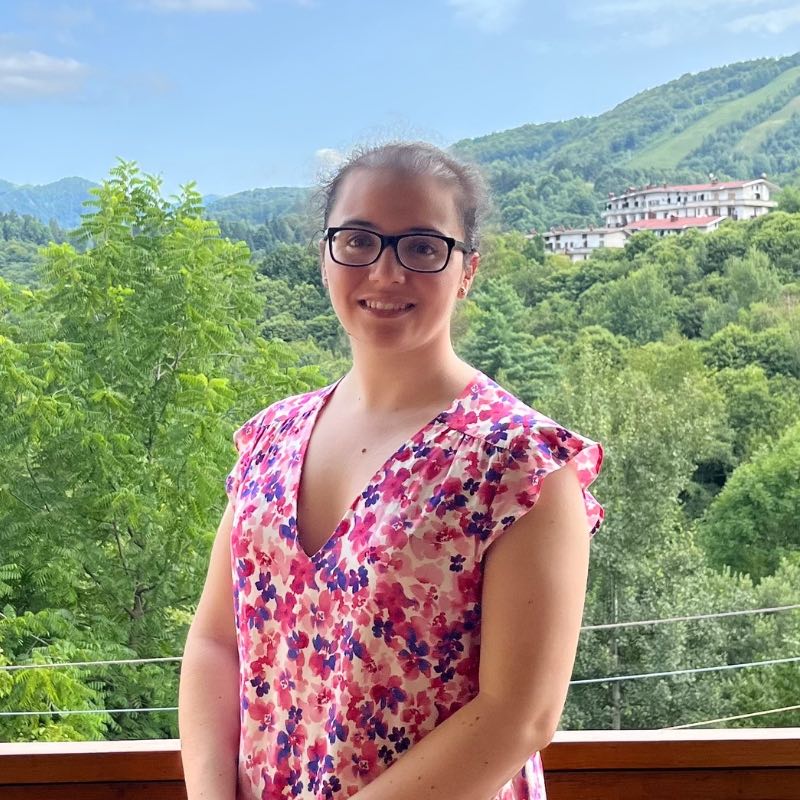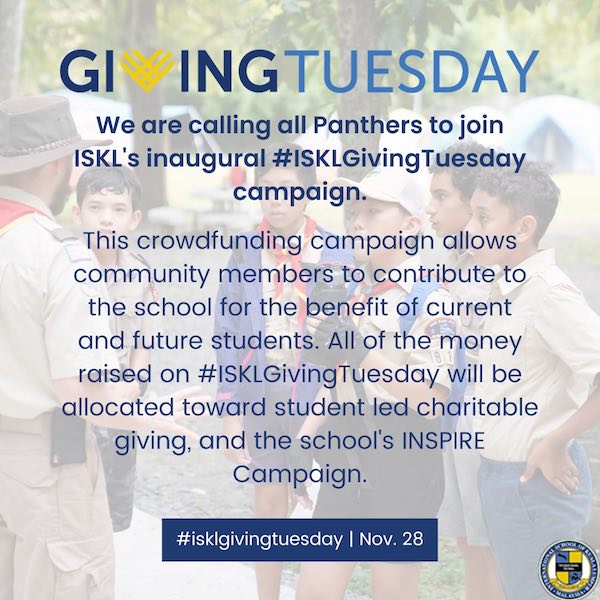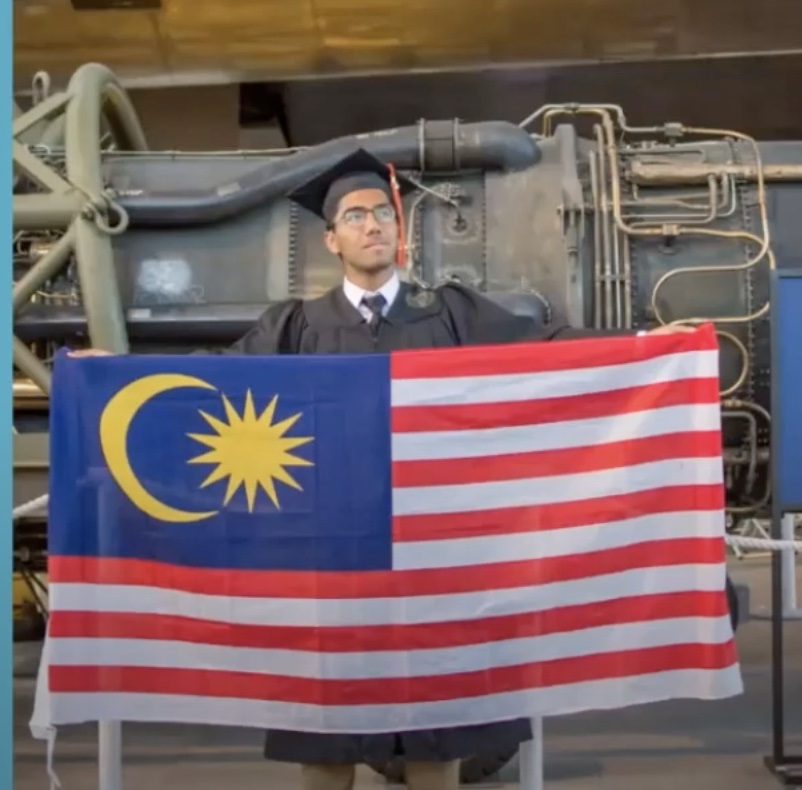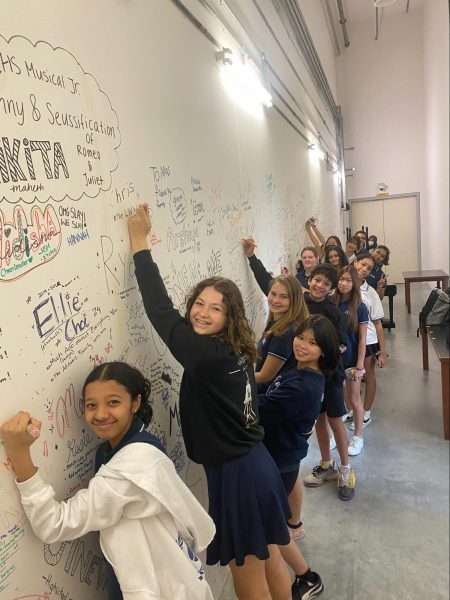Antti Koskelainen (’06)
Antti Koskelainen, Class of 2006, has a job that most of us would never have heard of before – he is a Fountaineer, a title that combines fountains and engineering! Malaysia was Antti’s first home outside of Finland, and he vividly remembers his six years at ISKL, starting in 2000. Like so many of us, Antti didn’t really know what he wanted to do after school, but he has found his niche in the field of ‘aquatecture’ working for a London-based firm, Studio Ewing. There he designs stunning water features and is truly living his dream of working in a creative and hands-on profession. Antti shared his story with Lynette MacDonald, ISKL’s Director of Development and Alumni Engagement.
LM: Tell us about starting school at ISKL. Was it a challenging transition coming directly from Finland?
AK: I still remember my first day, and the first class I had. It was a science class where I arrived late (it took me a long time to figure out the campus) and was made to read out loud for the whole class – which I found quite terrifying to be honest. Luckily, I struck up a friendship with one of the guys in the class (Tod Mullen) who tried his best to help me with the pronunciation of all the difficult words. Although he wasn’t too knowledgeable about the study of science itself, he did help me out tremendously when I was still learning English. In exchange I taught him all the Finnish swear words – so I think it was a fair exchange.
LM: You’re now working in an “aquatecture” firm in London, but started out as an automotive engineer. What was your journey from high school to university, then into the workforce?
AK: After graduating ISKL I moved back to Finland where I served a year in the army for my national service. Once I was out of the army, I went on to work in a hands-on role for a metal fabrication company. The idea was to start earning a bit of money while figuring out my next move. It was a good experience where I learned about manufacturing, and what the process is for turning raw materials into a finished product. Working with machinery on a daily basis also sparked my curiosity into learning more about the engineering principles behind them. This is when I started brewing up plans of aiming for an engineering degree. But I was also aware of my lack of interest in studying pure maths and physics itself, meaning I needed a study that combines these subjects with something I have an interest for – to have any chance of passing my degree. At the time I was spending a lot of time fixing up my old car which had an annoying habit of breaking down frequently, so this got me thinking that there must be a better way to design them. I mean how hard can it be, right? Inspired by this lightbulb moment, I ended up applying for an Automotive Engineering degree in Birmingham (Birmingham City University). This would include all the basics of a mechanical engineering degree, but with an added focus on designing.
Once I graduated with a degree in my back pocket and dreams of becoming the next hotshot car designer, I landed a job in a manufacturing company producing automotive components for the likes of Jaguar and BMW. Soon enough though, I found myself buried in spreadsheets and having to attend endless meetings. It was all just too much red tape and protocols that kept drowning out my urge to flex my creative muscles. So naturally, I tried arguing that I would be much more valuable to the company in a design role. However, I may have slightly overestimated my negotiation skills as the plan backfired and I was told to clear my desk the following day. Luckily at the time I was also running a little freelance design business on the side, which just about paid the rent while looking for new opportunities. It was quite a frustrating time, applying for every design role I could find, only to be constantly told that my CV did not match my career aspirations, or I just wasn’t ‘qualified enough’. Fortunately, I was pretty good at ignoring these people’s opinions, so eventually I did manage to find a full-time design role. Although by then I already had my sights on London, where I knew more creative opportunities were just waiting for me. And it just so happened that my current employer was looking for a designer at the time, so I travelled down to London for an interview. This was my first brief introduction to the world of water features, and I liked the mixture of creativeness, engineering aspects and a chance to get my hands dirty on building sites. Not to mention, playing with water for a living sounded like a fun thing to try.
LM: What exactly is “aquatecture” and what prompted the change in career focus?
AK: Aquatecture is a niche field of design that falls somewhere between architecture and product design. The aim is to come up with clever ways to bring out the magic in water. This means using different textures to create certain patterns and sounds or choosing materials that highlight the reflectiveness of the surface – which then opens up possibilities to introduce playful interactions between light and water. As water itself is in a constant state of change, as is the surrounding landscape (such as trees and plants), many of the effects are ephemeral and provide a different experience, depending on which angle or time of the day you look at it.
For me it was a whole new world which struck me as something that would scratch my creative itch while being able to work on innovating something new. Every project we do is a completely bespoke design – no two water features are the same. In other words, with every project comes a fresh set of challenges and opportunities to create something that has never been built before. This not only keeps it fun, but also means you are constantly learning something new with every project.

LM: How has the Covid-19 pandemic affected your work? Are more people interested in creating an “oasis at home” now that so many are forced to work from home?
AK: When all the construction came to a halt earlier in the year, I was fortunate enough to carry on with design work remotely. And once the building sites started opening again, all our ongoing installation projects needed completing all at once – so it has been an incredibly busy summer. Because we work in the very high end of the market where overall projects sometimes take years to plan even before we get involved, we haven’t yet seen a sudden spike in demand for water features during the pandemic. However, from talking with our suppliers who provide pumps and other pond related materials, it does sound like people up and down the country have been busy building ponds and water features in their backyards.
LM: It was finding one of your ceramic works from your time at ISKL (luckily which you had autographed) that led to ISKL Alumni getting in touch. What do you remember about those ceramics classes and teachers? Do you still work with ceramics?
AK: Ceramics was a lot of fun at school. In fact, I enjoyed all the creative classes because it gave me momentary escape from all the less exciting core subjects. I probably spent a third of my high school years in the art rooms. I like making things with my hands, so naturally I found ceramics to be enjoyable. It’s a good hands-on approach to understanding the basics of design, in terms of different shapes, textures and finishes. I haven’t been involved in ceramics since ISKL, but I always thought I’ll get myself a pottery wheel when I have my own design studio – just to use it as a stress relief tool whenever work gets too hectic!
The teacher I had for all my ceramics classes with was John Stupka. I also took his technical drawing classes, as well as two years of architecture with him. ISKL was only offering a one-year course in architecture, so when I asked Mr Stupka if there was any chance I
could take it again, he ended up tailoring a new program for me. You could tell he is passionate about the topics he was teaching and (as I’m sure most of his old students would agree) he has this healthy amount of rebellion in him, which meant there was never a dull moment in his class. I think it’s fair to say much of my inspiration to pursue a career in a creative field came from his classes.
LM: What were your favorite subjects and activities at ISKL? Did you ever participate in an IASAS competition?
AK: I enjoy competing in sports and participated in quite a few activities at ISKL. I mostly played rugby and bit of football and competed in IASAS for both sports – in Singapore and in Taipei. Rugby especially was a sport I enjoyed and the season was always my favorite part of the year. I also spent a lot of time on the climbing wall where I took part in numerous school competitions. Speed climbing was definitely my favourite type of climbing, which eventually got me involved in some local events outside of school as well. Being a tall kid did have its advantages when it came to beating the competition.
Apart from the sports and creative subjects, there were of course other enjoyable classes too. Or rather, there were some teachers that made those classes enjoyable. One of these teachers was Joey Granzow, whose guitar class I took with a group of friends. Although it turned out I was not cut out for the life of a rock & roll guitarist, as all I could manage was a few notes from a Bob Marley song. I also remember Tony Mullen’s study skills class where she helped me to be organised with my schoolwork. Although in my defence, creative minds are never tidy – so I may not have been the most receptive person to learn organising skills. Alan McLean was also another teacher who had a very approachable and friendly style to teaching his students. When I visited KL after my graduation, I got to know him a little bit outside the school environment, so it was genuinely saddening to hear the news of his passing last year. There were numerous other teachers and coaches also that all left a positive impact on me one way or another.
LM: You initially studied Engineering – do the skills learned translate to the work you are currently doing?
AK: Very much so! It does take a lot of engineering and head scratching to create something that seems to run so effortlessly. First you need to tackle the challenge of designing something that can be made into a physical product – be it a support frame, granite sections for a pool, steel sections for a tank, supports for a wall mounted water wall or a suspended water curtain. This means understanding the manufacturing capabilities for that particular material, and what methods are available to achieve the desired outcome. These principals are quite crucial, as they will dictate the design process and give you an idea where you can really let the creative juices run free and push the envelope with some clever design.
The second part of the equation is to understand the engineering principles and mechanics related to water – or hydrodynamics. The right pump flow rates need to be calculated to match the volume of water, and to provide enough juice for an infinity edge, jet, rill, or a spout. Pipe sizes need to be calculated to handle the volume of water without bottlenecks in the system. Pressure and water head calculations come into play when pumps are located at a different level to the water features. I could go on and on. Having an engineering degree does help to grasp these principles, but the real learning always takes place when you are actually building things yourself. Sometimes it takes a bit of trial and error – and water can be a cruel mistress as she will quickly point out the flaws in your design!
LM: What is your dream project? And what is the project you are most proud of to date?
AK: To me the best water features are designed to be subtle, innovative, and playful in a way that leaves you wondering, “wow, how is that possible?”. So, I would have to pick something along the lines of the water droplets at Teshima Art Museum in Japan. There are these tiny little holes on the ground where small droplets appear seemingly out of nowhere, to form very delicate streams only to disappear again. This is a good example of having an element of magic in the design. And if I had to pick something from the more dramatic end of the scale, then I would choose the water feature at Changi Airport in Singapore. It looks like such a fun project to have worked on.
I have been fortunate to work on so many amazing projects for clients around the world that it is difficult to pick just one. But to show a project that utilises the aforementioned playful relationship between water and light, I can share a project we built in a lightwell of a
residence in London. It’s a shallow reflecting pool where we used a spout to create ripples across the surface and a light projector to reflect those continually changing movements onto a wall. Another recent project was for a large countryside garden involving three different water features. The landscape and the garden itself provided a mix of classic English countryside and contemporary garden design, and the water features were built to bring in another natural element. These included an overbrimming granite plinth feature, a rill that runs through planting and a seating area, and two large reflecting pools – one of which has two infinity edges. The surfaces of the pools create a nice reflection of the sky and surrounding landscape.
LM: How different is it working with an automotive team versus a creative team? What role do you play?
AK: The quality engineering work I used to do was mostly collecting data and coming up with control systems and procedures to try and improve certain areas of manufacturing and quality of the products. Meaning you spent a lot of time getting bogged down on one small portion of the process and implementing something that has been proven to work. Whereas with creative teams the focus is more towards trying to create something that hasn’t been tried before and pushing the boundaries of design – which is always way more exciting.
I also prefer working in a small company, because it gives you more flexibility to get involved in all stages of creating. My role therefore tends to change on a daily basis, and when asked, I usually like to use the title Fountaineer – which always requires a follow-up with an explanation of what a fountaineer actually is. It’s a title that combines fountains and engineering, and for me that means being a designer, project manager, and a builder (with everything else in between) all rolled up into one. Also being involved in the day-to-day tasks of running a business has given me plenty of practical experience on real-life business management. But the most rewarding part of my job is to be able to build something that I designed myself. There’s a great deal of satisfaction you feel when you take an idea and build it into something real.
LM: What advice would you give to any ISKL student trying to choose what to study at university and who has a
creative bent?
AK: My advice would be to always choose a field of study that you are genuinely interested in. When you like doing something, then you will naturally spend more time learning and consuming that subject – and hence get better at it. Although knowing what you are passionate about is a rare thing to realise in high school, since most people don’t figure out their passion in life until their 30’s, 40’s or even later. Finding your passion and eventually building a career that’s both meaningful and fulfilling is a life-long process. So, don’t think you need to have it all figured out by the time you’re in high school – nobody does.
Therefore, I don’t think university is something that you should be stressed about too much (and I can see many parents raising their eyebrows as I say this!). It does of course give you a good foundation to build your career on, but the time to really specialise in something comes much later after university. Usually you end up working a few different jobs to find out what you don’t like, and then slowly start making progress towards something that you do enjoy. And if it’s design you want to study, then there are many paths to take. For someone wanting to design buildings, architecture may seem like the obvious choice whereas someone interested in designing bridges and other civil structures may choose to pursue a degree in civil engineering instead. If you have an interest in coming up with cool and clever new products, then product design is probably the choice for you. And if you have an interest in the creative arts world and enjoy working with your hands, then studying sculpture may be an option. Not to mention, there are plenty of other art degrees you can study. If there’s someone you aspire to be like, then you could look at their career path and find out what they studied to give you some idea what to go for. It all boils down to figuring out which course you have the most interest for and then pursuing that interest.
LM: I understand you are an avid ice hockey player. Were you able to play in KL? Tell us about your game.
AK: Hockey has always been my favourite sport to play. Back home in Finland you usually learn to skate at a young age, and I did play in KL as well. I think it was my freshman year when I heard from one of my friends – who was the son of the Czech ambassador – that there’s an ice rink in Sunway Pyramid where you can play hockey. Needless to say, I immediately got involved and kept playing through the rest of my high school. In the beginning it was just a handful of Canadian, American, and European expats, but slowly more and more locals got involved and it got to a stage where we played in big tournaments with teams from all over South East Asia.
It was quite amazing to see how the sport grew in Malaysia – although most Malaysians probably still wouldn’t quite know what ‘hoki ais’ is. But since then, they have developed a national team for both men and women, and the men were due to compete in the World Championship (Div IV) for the first time ever this March. I was really looking forward to watching their games, but unfortunately like other sports, hockey was also put on hold because of the pandemic.
Since leaving Malaysia I have kept playing in Finland, University leagues in the UK, and a few beer league teams in London. Annoyingly, in the UK they have strict restrictions for non-British players to enter competitive leagues, which has been very frustrating for players like myself. But I have still managed to do some amazing hockey trips abroad, the most memorable being a few weeks of hockey in Canada. The whole time I felt like a kid in Disneyland – it’s all just on another level over there. Throughout the years, hockey has given me so many great experiences and friends, so I’m definitely planning to keep playing as long as my body stays in one piece.
LM: Do you still stay in touch with other ISKL alumni? What are your favourite memories of ISKL, Kuala Lumpur and Malaysia?
AK: Thanks to social media it’s easy to stay in touch with people these days – so we do have few WhatsApp groups with old classmates from ISKL. And you always have some sort of idea what everyone is up to, even if you don’t keep in touch regularly. We’ve also had few mini-reunions in the past with people visiting from across the pond, with more plans in the pipeline for meeting up somewhere around the world at some point – once travelling is on the cards again.
Favourite memories from Malaysia all tend to centre around parties and trips with friends. Whether it was our senior trip, or some other holiday we took together, there were plenty of good memories made to last a lifetime. Also, one thing I do miss about KL is the food. Malaysia is such a multi-cultural melting pot where you can find all the best of Malay, Indian, Chinese, Japanese, Korean cooking, to name a few. One of my favourite things to do was to meet up at a mamak stall and just eat my own bodyweight in food. There are plenty of restaurants in London that do serve similar dishes, but it’s never as good as it was back in KL.










